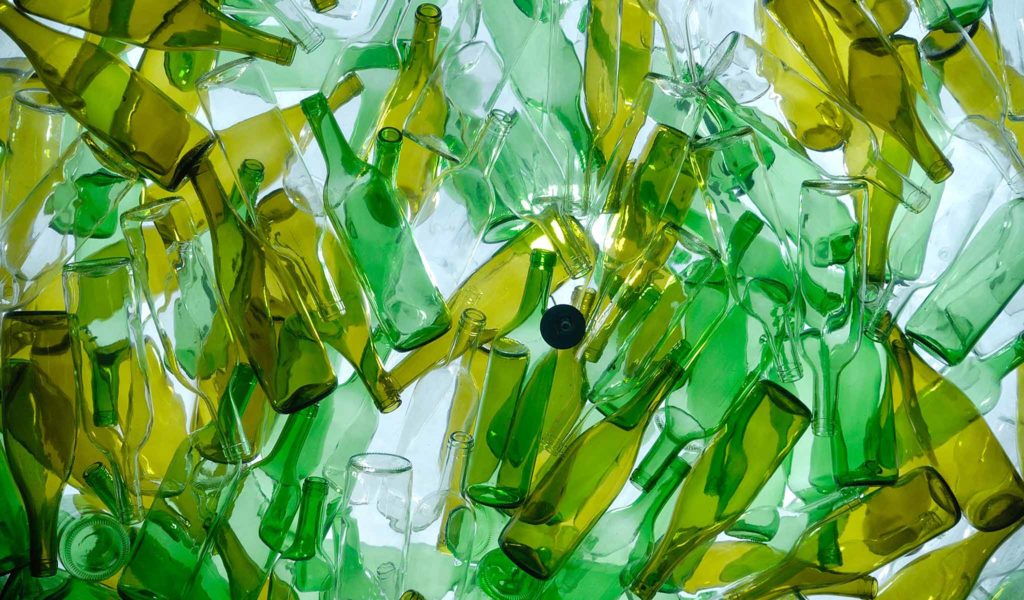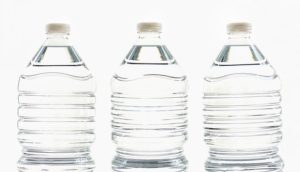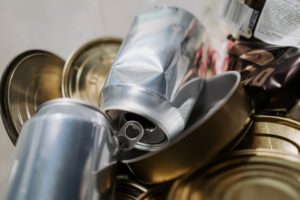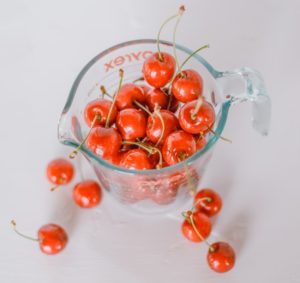Glass has been in use for thousands of years as a versatile material with endless applications. Thankfully, unlike other common materials, clean, clear glass can also be recycled endlessly with no loss in quality, making it a seemingly great option for products in a 21st century circular economy.
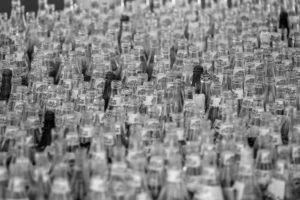 Glass that is most commonly part of Municipal Solid Waste (MSW), and our recycling bins, comes from glass bottles and jars. This includes alcoholic drinks, soft drinks, as well as glass jars and bottles for food, cosmetics, and other goods.
Glass that is most commonly part of Municipal Solid Waste (MSW), and our recycling bins, comes from glass bottles and jars. This includes alcoholic drinks, soft drinks, as well as glass jars and bottles for food, cosmetics, and other goods.
That said, there are other types of glass such as kitchenware, furniture, electronics, mirrors, and household appliances, which must be dealt with in different ways. The glass in CRT monitors, for example, is so heavily contaminated by lead that it can’t be recycled in the normal glass stream at all.
Unfortunately, however, the US is currently well behind the pace when it comes to recycling glass, with an estimated 37% of container glass actually recycled. This is compared to 74% in Europe, and while MRFs and municipalities are attempting to increase the US recycling rate through pilot programs and certifications, many cities have removed glass collection because of high contamination rates, high transportation and processing costs, and limited markets.
To understand how glass recycling works and how it might be improved, here we look at the entire recycling process for glass packaging before touching on how other products are dealt with when they become waste.
How efficient is the glass recycling process?
As the world continues to search for ways to lower its carbon emissions, recycling is rightly seen as an integral part of a circular economy. However, this means the industry been under increased scrutiny, and recently faced some criticism. The fact is that today many processing systems around the world are currently inefficient and certain products are inherently problematic.
Glass, however, can be processed endlessly without loss of quality, and the products created in the manufacturing process are generally 100% recyclable within the same stream. Having said this, infrastructure in the US is currently unable to take advantage of this fact, and contamination levels are extremely high—sitting around 50% to 60%.
If infrastructure were to be improved, however, there are numerous benefits associated with efficient recycling. According to the Glass Packaging Institute (GPI), using recycled glass in the production of new products cuts emissions, reduces the consumption of raw materials, extends the life of glass-making equipment (e.g. furnaces) and saves energy. More specifically:
- More than a ton of natural resources are saved for each ton of glass recycled.
- Energy costs are reduced by roughly 2-3% for every 10% cullet (crushed recycled glass) used in the production process.
- Carbon dioxide emissions from glass manufacturing are reduced by a ton for every six tons of recycled glass used.
Additionally, the recycling process creates jobs, with the GPI estimating that more than eight jobs are created for every 1,000 tons of glass recycled. This is in addition to the benefits of removing glass from MSW, such as reducing the amount of landfill and reducing environmental pollution.
Glass is a versatile, recyclable material with a variety of uses, but in the last few decades, much of the packaging that would have once been glass has been replaced with alternatives. However, is this really a step in the right direction?
How does the glass recycling process compare to other materials?
There are several alternatives that fulfill the main role of glass as a container for drinks, food, cosmetics, and other products. The main contenders are plastic, aluminum, and paper.
Plastic vs Glass
Many of the products that would have once been in glass are now delivered in plastic, most notably, soft drinks and water. However, when compared through the lens of recycling, the two materials don’t even come close.
- Plastic can only be recycled 2 – 3 times before it degrades too significantly to be used.
- Recycled plastics are often turned into different products due to degradation, as compared with glass where a bottle can become a new bottle.
- Recycling plastic is currently less economical than creating virgin plastic, meaning there is a lack of incentive. Glass recycling programs save resources, money, and energy.
- Plastic is inherently problematic due to different materials with complex recycling processes.
Some arguable benefits are that plastic requires less energy to ship thanks to the lower weight and is less liable to break than glass, but these benefits don’t outweigh the cons.
Aluminum vs Glass
As with plastic, aluminum is frequently used to contain soft drinks in lieu of glass. It is also popular as a container for food, specifically preserved foods that would have once been jarred. However, unlike plastic, aluminum is highly recyclable so does offer a more realistic alternative to glass.
- Aluminum is indefinitely recyclable with no loss of quality, just like glass.
- Recycled aluminum offers energy savings of about 95% over producing new aluminum.
- Recycled aluminum can be used for any product, such as with glass.
- Aluminum is lighter in weight, so less costly, and less of an environmental impact when shipping
Paper vs Glass
While it may not seem like a viable alternative to glass, paper is being used to package some products such as cosmetics that would have once come in glass, such as deodorant. What’s more, there are also food companies that are looking toward paper as an alternative – up to and including as a replacement for plastic bottles.
- Paper can only be recycled 4 – 6 times before fiber shortening makes it unusable.
- Due to the degradation, recycled paper is often only used for “lower quality” products such as egg cartons and tissue paper.
- Recycled paper uses 60% less energy compared with new.
- A ton of recycled paper saves 7,000 gallons of water compared with creating new paper.
- A ton of recycled paper saves 31 trees compared with creating new paper.
While the recycling of paper doesn’t really stack up to the benefits of glass, it’s often being used as a substitute thanks to its ability to biodegrade rather than the ability to recycle it. This has its own pitfalls but is worth keeping in mind.
How glass is recycled, step by step
With a better understanding of glass recycling and how it stacks up to other materials, let’s look at the actual glass waste recycling process.
Collection and Transportation
Glass is collected from both multi-stream and single-stream recycling bins, as well as community drop-off points. This can be curbside for residential and commercial properties, in shared waste management zones (such as municipal recycling points), or through private waste collection programs, mainly for businesses.
This glass is then transported to specialized glass recycling centers.
Sorting
At this stage, the recycling facility searches for contaminants through an optical sorting process. This can include separating out certain glass types (such as Pyrex and mirrors) as well as removing more obvious contaminants such as metals or plastics.
Here, the glass is also sorted by color, which is created by various additives that shouldn’t be mixed. For example, brown glass is created by adding materials such as carbon.
Breaking
The sorted glass is then broken into smaller pieces using a series of hammers that automatically pulverize the waste glass. At this stage of the glass recycling process, a little water may be added to stop glass particles from becoming airborne.
Screening
The broken glass is then passed through rotary screens (aka trommel screens), which separate the pieces of broken glass according to size—commonly 3/8” and 3/4”. At the same time, a fan is used to separate the paper labels that are often still attached during the breaking process.
Other items that can’t be broken down and don’t fit through the screens are also filtered off to be recycled through their own processes or to be sent to landfills.
Bed Drier Fluidization
In the next step of the process of recycling used glass, the broken pieces vibrate through a drier that forces hot air (around 190F) through the bed and the glass to burn off sugar and bacteria as well as loosen the remaining glue. The contaminants that remain in this stage are then extracted by vacuum.
Primary Screening and Pulverization
A meshed screen allows smaller pieces of glass to pass through while redirecting larger ones into a pulverizer. This pulverizer will then break down the glass in an enclosed unit until it is small enough to fit through the primary screen in a kind of test-and-repeat loop.
Secondary Screening
Once the glass particles are small enough to fit through the primary screen, they are then sorted and classified according to size using secondary screening. Different final uses require different sizes, so each grade will be directed to a specific manufacturing sector.
The Cullet
This is the end of the glass recycling process, with what is now called “cullet” being sent to produce new products. The cullet (i.e., broken glass) at this stage can be as big as pebbles or as fine as sand.
In addition to using this recycled glass for new glass containers, it is also used in products such as fiberglass, ceramics, filtration units, abrasives, and more.
Is the recycling process of all glass the same?
Certain glass products can be part of the same glass recycling process as containers. However, many others need to be separated into different processes of glass recycling or disposal.
Mirrors
Mirrors are rarely accepted into the normal glass recycling process and must therefore be sent to landfill.
Light Bulbs
While the glass in light bulbs isn’t contaminated (such as that of CRTs mentioned earlier), they still can’t be recycled along with glass containers due to the mix of materials.
Pyrex
Oven-safe glass is treated to allow it to withstand high and low temperatures. As such, it cannot be part of the normal glass recycling process.
Windows
Windows and glass doors are specially treated to make them more resistant or to have certain desirable properties—for example, being shatterproof. As such, they also can’t be recycled along with glass containers.
Drinking glasses
One of the most surprising non-recyclable glasses for most people is drinking vessels. Just as with oven-proof dishes or windows, drinking glasses are made with certain processes that make them great as glasses but a hindrance to glass container recycling.
Problems with the US glass recycling process
Unfortunately, while the recycling process for glass is an exemplar of sustainability, and glass is a highly recyclable material, the reality can sometimes be less than satisfactory.
Today, there are numerous problems with the glass recycling process in the US, including an existing infrastructure that is unable to separate the various colors of glass at the facility, alongside facilities that are unable to produce clean recycled glass that leads to difficulties in finding end markets for contaminated product.
Increasing bottle redemption programs and reinstating and increasing recycling programs for residential properties may help. Additionally, responsibly managed commercial recycling may improve glass recycling in the US, both designed to increase the quality of incoming streams. However, the GPI and the GRF (Glass Recycling Coalition) also aim to push glass recycling rates up to 50% through certification and innovations in technology that highlight improvements in facilities that can separate and clean glass at dedicated glass facilities.
For more information on how your business can reduce plastic waste, contact our TRUE Advisors today. Additionally, subscribe to the RTS blog for more news and insights on sustainable waste management.

